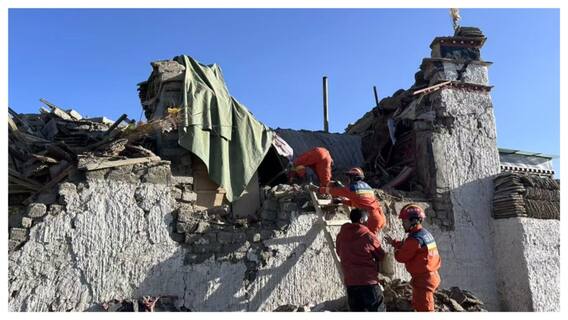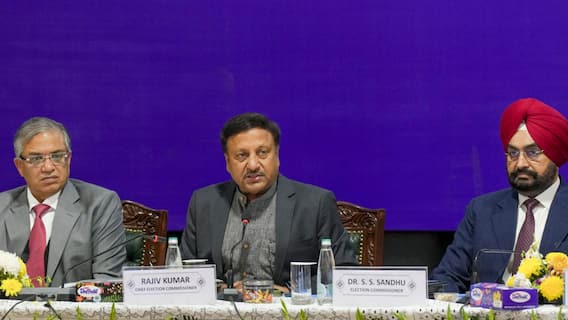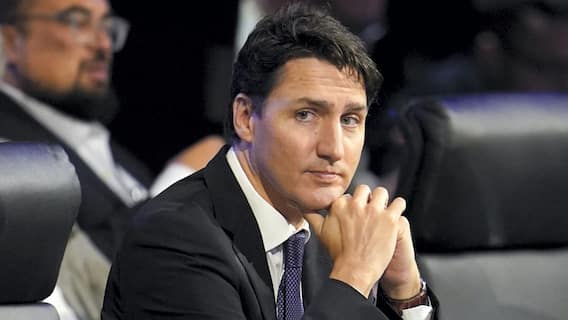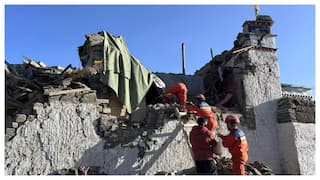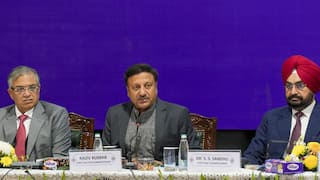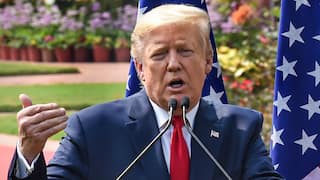Beijing's political nod to PLA's new aggression on India-Bhutan border

Thimphu [Bhutan], June 30 (ANI): The recent jostling near the China-India-Bhutan border marks an uptick in tensions.
The pertinent question is to ask whether there is any specific reason as to why China is taking this course of action at this particular juncture.
It is, of course, difficult to pry into the inner thinking of the Chinese leadership and of the People's Liberation Army (PLA), but it is undeniable that the military and border defence troops are under the close control of the Chinese authorities and the Communist Party.
Considering that few plaudits are given to officers who show remarkable initiative - for the PLA adores conformity and the ability to follow party orders - this is presumably a confrontation that has been sanctioned by a higher military command, instead of just being something started by overenthusiastic troops on the ground and which got out of hand.
Looking at it from the broadest angle, tensions in the East China Sea and even the South China Sea, have been relatively quiet in recent months, so China likely feels confident about pushing the envelope elsewhere for a season. Maritime territorial areas plus the perennial "problem" of Taiwan have long been the focus for China, but it has not completely forgotten other spheres either.
Indeed, it is some time since there was a serious confrontation along the Sino-Indian border, so this serves as a timely warning to keep Delhi on its toes and in its place.
This is not an isolated incident either, as there has been a pattern of increased PLA activity in the area. China has been constructing a new road in the Sikkim sector, and satellite imagery seems to confirm that part of it intrudes across Bhutan's border.
M. Taylor Fravel, an associate professor of political science at the Massachusetts Institute of Technology (MIT) and a member of its Security Studies Program, tweeted, "After border face-off, China justifies construction of road in Sikkim sector, says area not under border disputes."
As is usual with China, the country is skillful at turning around its own misdemeanors to instead accuse others of wrongdoing. This explains Chinese Foreign Ministry spokesperson Lu Kang's comments, "As per this treaty, the area over which the Indian Army has raised objection is undoubtedly located on the Chinese side of the border."
He continued, "The liability lies totally with the Indian side. The Indian troops crossed the Sikkim section into China's territory against our mutual recognition."
Lu continued, "Donglong is part of China's territory. This is indisputable. The Donglong area has belonged to China since ancient times and does not belong to Bhutan. If India wants to raise an issue with this part, I should say that it does not belong to Bhutan nor does it belong to India. So we have complete legal basis for this. China's construction of road projects is just a legitimate and normal action on its territory. No other country has the right to interfere."
Of course, China is keen on driving a wedge between India and Bhutan, so it has been quick to blame India for the tensions, and has told it to stop interfering.
However, Lu did not seem to see the irony in his comment: "We hope countries can respect the sovereignty of Bhutan. Though the boundary between China and Bhutan has not been delimited, no third party should interfere in this matter and make any irresponsible remarks or action." Does this advice not also apply to China, whose road-building activities have obviously been irresponsible as they created tensions?
In typical fever-pitched Global Times style, the Chinese newspaper said, "Indian troops' provocation brings disgrace to themselves". It continued, "It remains unclear whether this flare-up is the fault of low-level Indian troops or a tentative strategic move made by the Indian government."
Again, this is typical smear tactics from Chinese media, where all publications must toe the party line.
Naturally this op-ed was full of rhetoric such as this: "Whatever the motive is, China must stick to its bottom line. It must force the Indian troops to retreat to the Indian side by all means necessary and China's road construction mustn't be stopped."
It can be useful reading such opinions as it reveals the typical arguments and narratives that the Chinese love to use in many different contexts. Unfortunately, the irony of accusing India of public propaganda is completely lost on China with statements like this: "However, almost all frictions are fed to the Indian media by the Indian military which they hype time and again." They just shot themselves in the foot.
The op-ed also referenced India's growing "sense of strategic superiority" and that it is being used as a pawn by American, Japanese and Western powers to counterbalance China's peaceful rise. China has long exhibited a chip on its shoulder about its historical treatment by the West, so it is no surprise to see this brought into the equation.
Yet Chinese arrogance and its own "sense of strategic superiority" was immediately exposed in a subsequent paragraph when the Global Times said, "India cannot afford a showdown with China on border issues. It lags far behind China in terms of national strength and the so-called strategic support for it from the US is superficial.India's GDP is only one-quarter of China's and its annual defense budget is just one-third."
Then, of course, the olive branch - grasped in an iron fist - "China has no desire to confront India. Maintaining friendly ties with New Delhi is Beijing's basic policy. But this must be based on mutual respect." And this, "It's not time for India to display arrogance toward China. Having a friendly relationship and cautiously handling border issues with China is its best choice."
China is annoyed that India is building up infrastructure - slowly, it must be pointed out - along its side of the Line of Actual Control, including in Sikkim. The irony of Chinabeing far ahead in terms of infrastructure such as roads and military fortifications seems lost on the Chinese. This is another typical case of "Do as I say and not as I do".
These arguments are all so typical of China, and the first thing the Indian Government needs to do is to understand how China thinks and operates. China is also adept at playing the poor victim, so its protest to India about Indian troops "crossing the boundary" are unsurprising. Holding future visits of Indian pilgrims to Kailash Mansarovar to ransom is another typical Chinese ploy.
This dispute at the tri-border juncture does seem yet another Chinese land grab. Indeed, this is part of its favoured strategy of "salami slicing," and it follows precisely what Beijing did in the South China Sea.
There the country grabbed reefs, reclaimed them and built military installations on them, all the while continuing to broadcast its message that this was all legitimate, it was for peaceful purposes and that no other country had a right to interfere because it was China's "indisputable sovereign territory". This is the numbing refrain that China uses over and over again.
China also uses its citizens - farmers and grazers in the case of the Indian border, or fishermen in the South China Sea - as its vanguard. Once these civilians have established a presence, this paves the way for more permanent fixtures and eventually a military presence to "protect" its citizens in their now "historic territories".
All the while, China continues to slice off more pieces of territory for itself and gain a permanent presence, something about which weaker and smaller competitors cannot do anything. It is using exactly the same modus operandi along its disputed border with India. This is why the Indian government needs to show determined resolve, and to also make sure that it publicly highlights the strategy that China is utilising. China has absolutely no sense of shame in what it is doing, and it will take every advantage if allowed to do so.
This deliberate strategy by China to bite by bite eat away at Indian territory is proving successful. One recent report indicated that India has lost nearly 2,000km² of territory to PLA encroachments over the past decade alone.
Sure, China is not gaining land through the use of bullets and guns, but it is achieving the same level of success. Even in the South China Sea, the decrees of international law and the might of the U.S.A. have done little to thwart or even slow down Chinese expansionism. A lack of border fighting should not be construed as victory for India for this plays straight into China's chosen strategy. Accommodation to China's incremental advances has to stop, and India must stand up for itself or it risks accelerated land grabs from Chinese troops.
China has behaved similarly with Vietnam in recent days. General Fan Changlong, vice chairman of the Central Military Commission, made a two-day visit to Hanoi on June 18-19 and was then supposed to accompany Vietnam Defense Minister Ngo Xuan Lich for joint military patrols along the Sino-Vietnam land border from June 20-22.
However, Fan abruptly cancelled the latter, citing "reasons related to working arrangements". However, the real reason is more likely to be disagreements over renewed oil and gas exploration, with Vietnam refusing to accede to Chinese demands that it halt all exploration within China's so-called "nine-dash line". Two areas, Blocks 118 and 136, are at the center of the dispute as Vietnam explores for undersea hydrocarbon deposits. Ironically, though, China continues to explore for oil and gas around the Gulf of Tonkin and the Paracel Islands, the possession of which is bitterly disputed by Vietnam.
China is also annoyed at Vietnam's rapprochement with the U.S.A. The latter handed over an ex-U.S. Coast Guard Hamilton-class cutter to Hanoi last month. Plus the two sides have promised greater intelligence sharing, which no doubt encompasses activities in the South China Sea. Tokyo has also been supporting Vietnam with maritime security equipment and boats too.
There are other things that have irked China in recent times that may have combined to encourage China to act now along the Indian border. One was the meeting between Modi and Trump earlier this week, and China would have been keen to divert Prime Minister Narendra Modi's attention from this summit. Speculatively, China may have felt the need to gain revenge for the Dalai Lama's April visit to Arunachal Pradesh too.
Another factor that could be at play is the White House's approval of the sale of 22 non-weaponised MQ-9B Guardian unmanned aerial vehicles (UAV) to India on 21 June. Although the proposed sale is yet to receive congressional approval, a green light seems assured. Although the Guardian is unarmed, Washington's willingness to sell the platform confirms that India is viewed as a strategic partner of the USA.
What is notable, ANI has learned, is China's objections to the sale. Before Washington gave approval, Pakistan had to express that it had no objections to such a sale to India. An industry source confirmed that Pakistan was okay with it, but that the greatest opposition has been coming from China. In fact, the source said Beijing was 'upset' about it.
There are probably a couple of reasons for this. One is that the PLA Navy has been making more regular forays into the Indian Ocean, and obviously it opposes any upgrade in Indian maritime surveillance capabilities. Guardian UAVs based at the Andaman and Nicobar Islands, for example, would be able to monitor Chinese naval vessels transiting the Malacca Strait.
Another reason is that China, which has been achieving notable sales successes for medium-altitude long-endurance UAVs such as the Wing Loong, will now face more serious competition for future sales around the world. Indeed, China has created something of a global chokehold because of tight export controls in the USA, but a sale to India could mark the beginning of a relaxation in American export restrictions.
Another thing upsetting to China is India's willingness to sell the BrahMos supersonic cruise missile to Vietnam. Just as it has vociferously opposed the US Army deploying the Terminal High Altitude Area Defense (THAAD) missile defense system in South Korea, so Beijing will obstinately oppose any prospective Indian missile sale to Hanoi.
Perhaps this current border dispute is a confluence of many factors, and it cannot be pinned directly to a single one. Certain, though, is the fact that it is part of China's broader desire to build military and dual-use infrastructure along its mountainous border, which reflects Beijing's overarching strategy of taking over additional slices of disputed territory wherever and whenever it can. (ANI)
This story has not been edited. It has been published as provided by ANI
Trending News
Top Headlines







